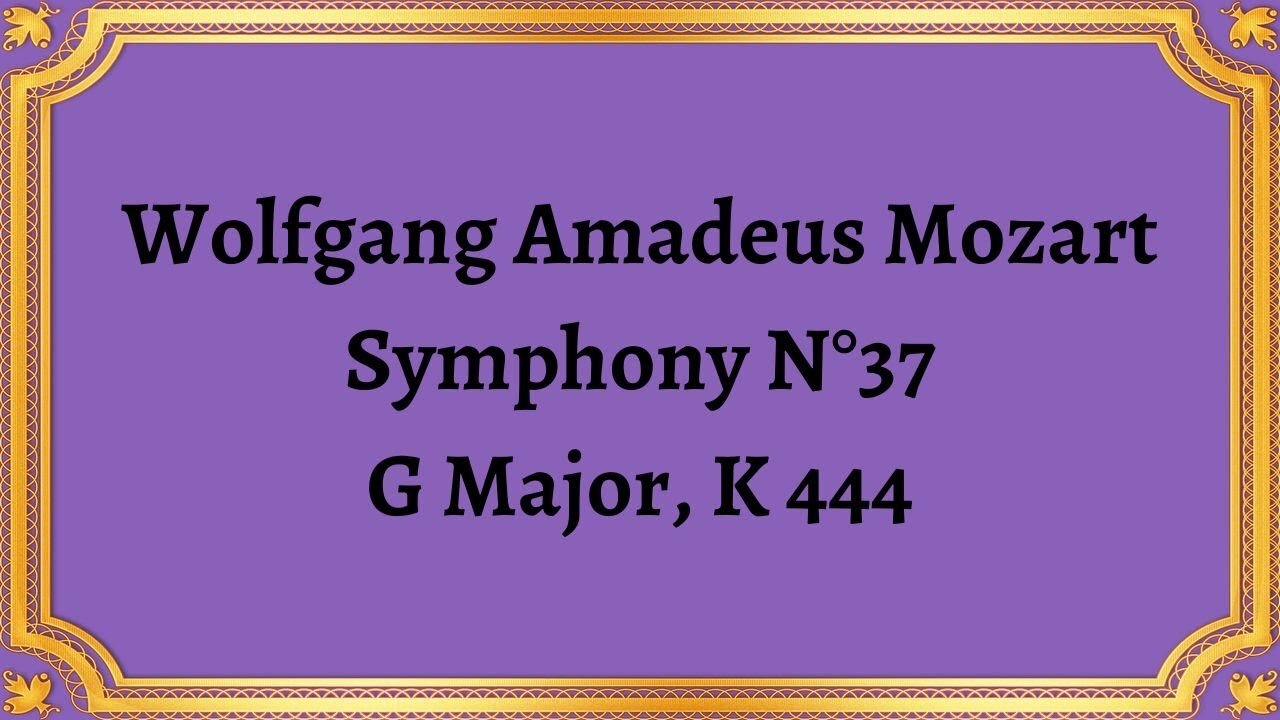Premium Only Content

Wolfgang Amadeus Mozart Symphony N°37, G Major, K 444
Publication date 1950Wolfgang Amadeus Mozart is one of the most well-known and respected composers in the history of classical music. One of his lesser-known works is Symphony No. 37 in G Major, K 444. Despite its obscurity, the Symphony remains an important piece in Mozart's oeuvre,
Mozart composed Symphony No. 37 in G Major in 1783 when he was 27 years old. At the time, Mozart was living in Vienna and was in the prime of his career. Despite being one of Mozart's earlier works, the Symphony displays his complex use of harmony and melody, which are evident in his later works.
The Symphony has four movements, with the first one being in sonata form. The opening movement is a cheerful and lively piece, which is typical of Mozart's style. The second movement is a beautiful adagio, which is slower and more expressive than the lively opening movement. The third movement is a Minuet and Trio, which is a dance form popular during the 18th century. Finally, the fourth movement - allegro - is a fast-paced, energetic piece that brings the Symphony to a thrilling conclusion.
One of the unique features of Mozart's Symphony No. 37 is its use of woodwinds. Mozart was renowned for his skill in composing for woodwinds, and he uses them extensively in this Symphony. The woodwinds add a bright and lively aspect to the Symphony's overall sound.
The Symphony's G Major key is also an important aspect to note. In classical music, major keys are often associated with positivity and happiness, with G Major being one of the most uplifting keys. Mozart uses the key effectively in this Symphony to create an overall joyful sound.
Although Symphony No. 37 is not as well-known as some of Mozart's other works, it is still an important composition in his catalog. The Symphony showcases Mozart's early mastery of the sonata form, as well as his ability to create vibrant and lively music.
In conclusion, Wolfgang Amadeus Mozart's Symphony No. 37 in G Major, K 444, is a lesser-known piece in his repertoire, but it is a vital example of his skill for composing vibrant, joyful music. The Symphony's use of woodwinds and key signature both help to create a unique overall sound. Despite its relative obscurity, Symphony No. 37 remains an important addition to Mozart's legacy, one that classical music enthusiasts should take the
You have the opportunity to support the channel: https://destream.net/live/RadSiarAl/donate
-
 48:22
48:22
Classical music_Music Inspiration
1 month agoHector Berlioz Fantastic Symphony
801 -
 1:07:06
1:07:06
Mike Rowe
18 days agoThe Fight For America's Heartland | Salena Zito #442 | The Way I Heard It
35.4K47 -
 2:43:30
2:43:30
TimcastIRL
7 hours agoSouth Park Goes FULL CHARLIE KIRK, Latest Episode ROASTS Trump Again | Timcast IRL
218K105 -
 DVR
DVR
SpartakusLIVE
7 hours agoThe Return of the KING of Content
51K -
 10:05
10:05
MattMorseTV
10 hours ago $8.39 earnedHe actually did it...
60.5K25 -
 1:32:39
1:32:39
Anthony Rogers
1 day agoEpisode 376 - Todd Schowalter
32.9K -
 3:42:07
3:42:07
megimu32
6 hours agoOTS: Movie Tie-In Games + Remakes: Let’s Play Memory Lane
46.8K5 -
 1:15:06
1:15:06
Adam Does Movies
14 hours ago $1.03 earnedTalking Movies + Ask Me Anything - LIVE
32K8 -
 1:17:18
1:17:18
Glenn Greenwald
1 day agoWhat are CBS News' Billionaire Heirs Doing with Bari Weiss? With Ryan Grim on the Funding Behind It; Europe Capitulates to Trump Again | SYSTEM UPDATE #494
116K85 -
 1:43:49
1:43:49
RiftTV
8 hours agoCNN Calls Black NY Shooter WHITE, Cincinnati FATIGUE | The Rift | Guest: Braeden Sorbo, 2Protects1
55.4K18